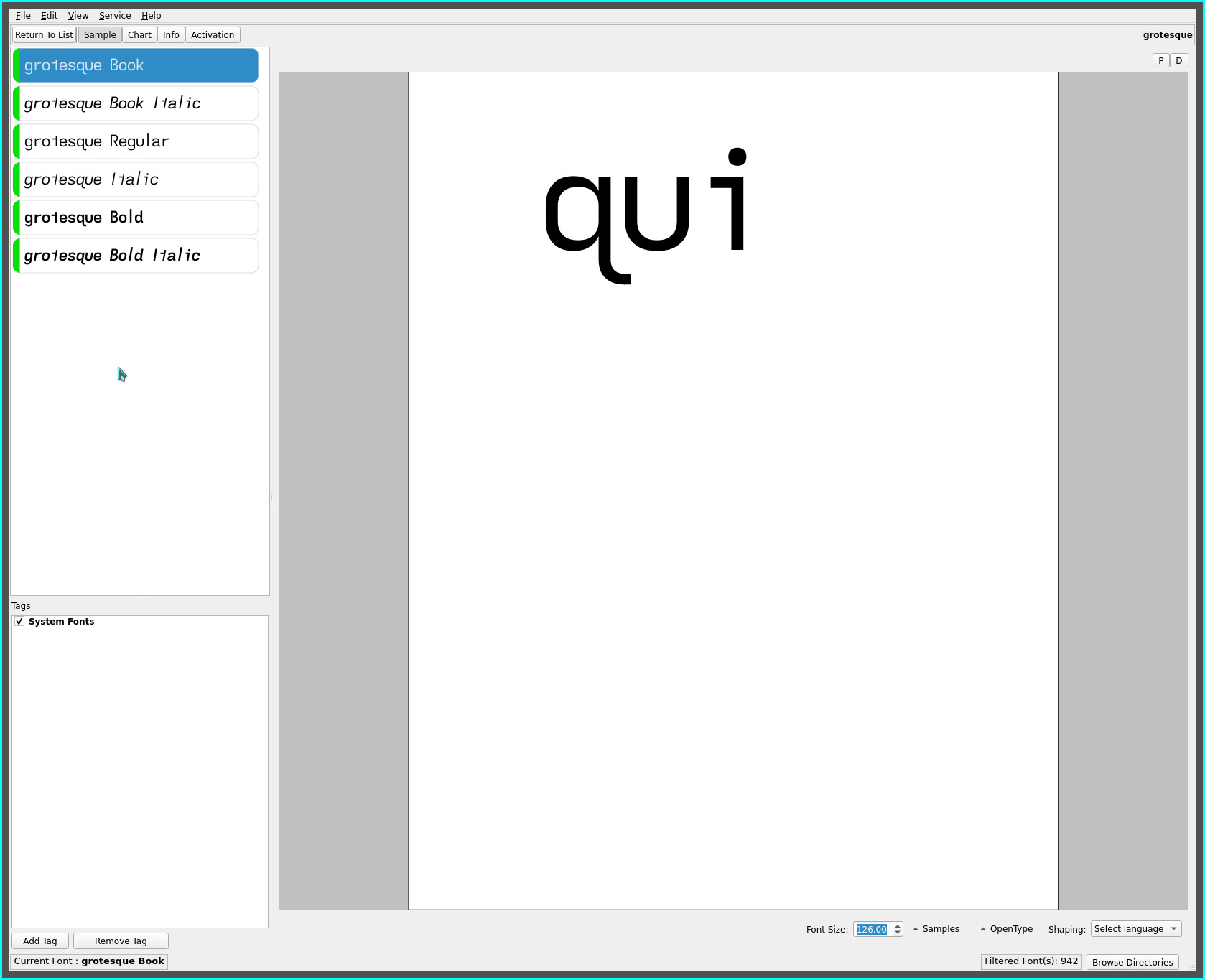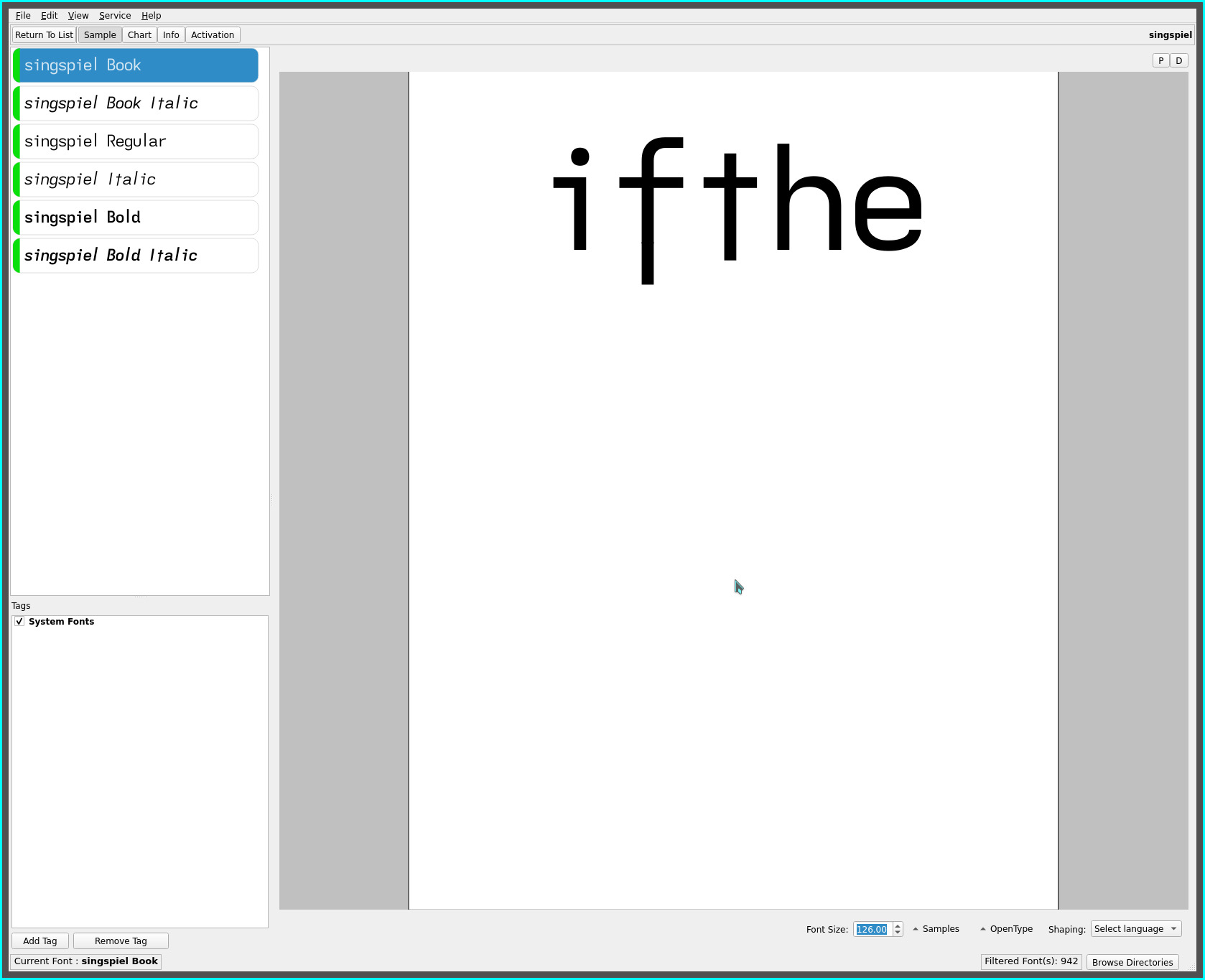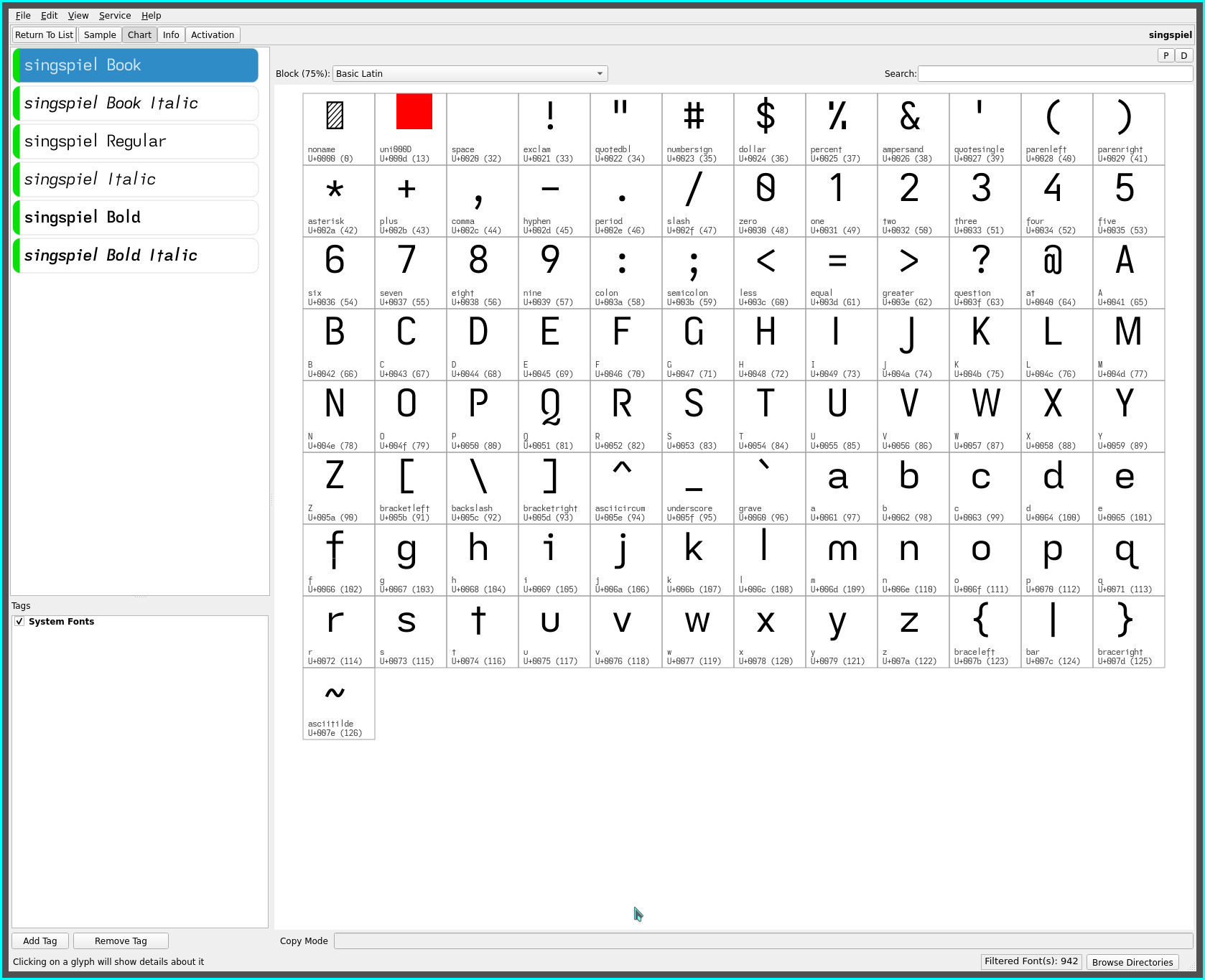singspiel font
the singspiel font marks a visual departure from the font series released on this site with the re-introduction of the familiar lower case cross t.
For those unfamiliar with the dyslexic fonts from this site, some history..
asymmetric t
over the course of the past two years—has it been that long!—the reversed asymmetric lower case t became the uniquely defining glyph for the dyslexic font variants released since its inception.

Despite its unfamiliar glyph shape—doubly so, being not only asymmetric but reversed—the sweeping rise imparted by the right side stem next to adjacent cap height glyphs (notably, the high frequency th bigram) quickly established itself as part of the core set of standard dyslexic glyphs—both visually appealing (to these biased eyes), as well as, strikingly unique, a glyph reduced to its bare essence.
q hook
shortly after the grotesq font was introduced, the grotesque font was created with the hook of the lower case q significantly extended into the adjacent character cell, further distinguishing itself from the other non-mirrored lower case b d p glyphs..

The grotesque font quickly established itself as my default ereader font and all was well in font land :-)
cross t
forever exploring the “feel” typefaces impart to the visual experience of reading printed material, the q hook extension and the recently re-introduced (and modified) extended f led to revisiting the lack of a cross t glyph shape in the current font rotation.
Hence, it’s re-introduction, both as an homage to the Futura font and the fact that many (and anyone unfamiliar with the dyslexic font progression on this site) probably find the reversed asymmetric t too radical a glyph shape to consider.
One of the reasons the lower case cross t fell out of favour over the course of this site’s font journey is that visually the x-height portion of its stem felt too stubby or short (despite its short neck—to these eyes—and the desirable “air” around the glyph), the asymmetric t being more distinct with the same stem height while providing an added distinctive visual progression or movement.
Enter the extended stem..
First attempts with a y depth descender felt overly visually pronounced on the printed line due to the linguistic frequency of the letter. This was remedied with graduated reductions of the descender depth until, unsurprisingly, a total stem length equal to the cap height of the typeface was reached..

This glyph shape retains the sweeping rise produced by the reversed asymmetric lower case t—the (visual) loss of the asymmetric glyph’s right side stem transition to the following letter, instead, is offset by the subtle descender which provides a larger surface area (top and bottom stem) visual riser to adjacent cap height letters—whilst not disrupting the horizontal baseline and, importantly, returning the all familiar glyph shape.
singspiel
Despite only differing by a single glyph change from the grotesque font, the singspiel font flows with a subtle visual wavelike rhythm while managing to project an even cleaner geometric typeface (in part, i suspect, due to my fondness for the Futura font “look”).
This typeface also departs from past naming conventions in not containing the glyph of significance in its name—the first iterations of the typeface with the full y descender depth, felt like musical notation, hence, the reference to a musical term.

‧ ‧ • ‧ ‧
The reversed asymmetric t has been so predominant in my ereader usage the past two years, it has been surprising how readily these eyes have welcomed the return of the familiar cross t. The cap height stem length allows the glyph to be distinct without being visually intrusive—and feels more “balanced” for it—yet contributing to the font’s pleasant visual rhythm.
As always, YMMV.
repos
This font may be found on OneDrive.